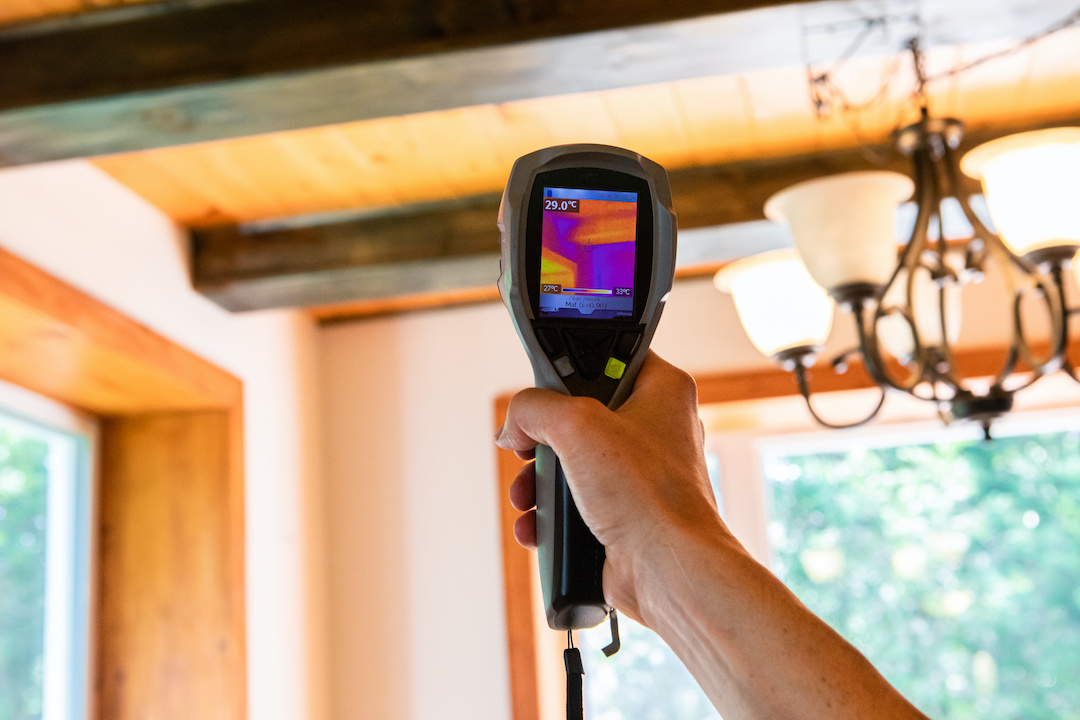When people hear the word “mold,” it often triggers concern, especially if found in the home. But did you know that mold is a natural part of our environment? It’s all around us, outdoors and indoors, and some level of it is always present in the air we breathe. So, what exactly does it mean when mold is detected in your home through air testing? Is there such a thing as a “normal” level of mold? Let’s dive into the details.
Understanding the Ubiquity of Mold
Before we get into what constitutes a normal level of mold, it’s essential to understand that mold is everywhere. Mold spores float through the air and settle on surfaces, waiting for the right conditions—like moisture and warmth—to grow. This is true whether you live in a bustling downtown area or in a house nestled next to a forest. Naturally, the concentration of mold spores in the air can vary depending on your environment.
For instance, if your home is in an urban area, the outdoor mold count might be influenced by factors like pollution and less vegetation. On the other hand, if your backyard is filled with trees and composting leaves, the outdoor mold count might be significantly higher due to natural decomposition processes.
So, when you bring air testing into the picture, the results you get are influenced by these environmental factors. The mold levels detected inside your home can vary widely based on what’s happening outside. That’s why it’s crucial to understand the context of these numbers rather than jumping to conclusions.
How Air Testing Measures Mold Levels
Air testing for mold involves collecting samples of air from different areas of your home. These samples are then analyzed in a lab to determine the concentration of mold spores present and to identify the species of mold detected. The results are typically compared to outdoor mold levels, which act as a baseline to assess whether indoor mold levels are elevated.
But here’s the thing: no home is ever entirely mold-free. Given that mold is a part of our natural environment, it’s practically impossible to achieve a “zero mold” result. And that’s okay! The real question isn’t whether mold is present but rather at what level and what species of mold are in your home.
What is a “Normal” Mold Level?
When discussing normal mold levels, it’s important to note that there isn’t a one-size-fits-all answer. As mentioned earlier, environmental factors play a huge role in determining what’s normal.
For example, mold levels that might be perfectly acceptable in a forested area could raise alarms in a more controlled, urban environment. Generally speaking, if indoor mold levels are similar to or lower than outdoor levels, it’s often considered normal. However, if the indoor levels are significantly higher, it could indicate a problem, especially if specific species of mold known to be harmful are found.
Two Key Qualifiers: Level and Species
When evaluating mold levels, two primary factors are considered:
- The Concentration of Mold Spores: The total number of mold spores found in the air samples gives an indication of the overall mold load in your home. Elevated indoor levels compared to outdoor levels may suggest mold growth within the home.
- The Species of Mold Present: Not all molds are created equal. While some molds are relatively harmless, others can produce allergens, irritants, or even toxic substances called mycotoxins. For instance, Stachybotrys, often referred to as “black mold,” is a species that can be a cause for concern if found in high concentrations.
So, when we perform air testing, it’s these two qualifiers—concentration and species—that help determine whether you’ve got a mold problem on your hands or just the typical background levels that are part of everyday life.
Educating Homeowners About Mold Testing
At Mold Solutions, we believe in educating our customers about mold testing. We often explain that finding some level of mold in your home is not unusual. It’s just a fact of life. What’s more important is understanding the significance of the results.
When we conduct mold testing, we’re not just looking for the presence of mold; we’re assessing whether the levels detected are normal for your specific environment and whether any potentially harmful species are present. This approach helps us determine whether there’s a real issue that needs to be addressed or if the mold levels are just a reflection of the outdoor environment.
What Should You Do if Mold is Found?
If your mold test results show elevated levels or identify concerning species, it doesn’t automatically mean you’re in danger, but it does warrant further investigation. Sometimes, the issue can be as simple as improving ventilation, fixing leaks, or reducing indoor humidity. In other cases, professional mold remediation might be necessary.
What’s crucial is taking a balanced approach. Panic is unnecessary, but neither is ignoring potential problems. The key is to understand what your mold test results mean and to take appropriate action based on those findings.
Mold is a natural part of our environment, and it’s virtually impossible to avoid exposure to it altogether. The goal of air testing isn’t to eliminate all mold but to ensure that the levels in your home are within a normal range for your specific environment and that no harmful species are present in concerning amounts.
Remember, context is everything when it comes to mold. The outdoor environment plays a significant role in what’s found inside your home. So, when air testing reveals the presence of mold, don’t jump to conclusions. Instead, consider the concentration, the species, and the environmental factors before deciding on the next steps.
At Mold Solutions, we’re here to guide you through the process, helping you understand your air test results and what they mean for your home. Because when it comes to mold, knowledge is power—and peace of mind.








